Editor’s Update:
- When we wrote this article on June 23, 2012, we didn’t know how readers would react to it. The majority of Indians prefer feel-good or celebratory articles. In fact, such endings are virtually mandatory in blockbuster Bollywood films. We were very pleasantly surprised when positive reactions poured in from all over India. We were told that the article was being passed around via email networks. This week, we received an email from a reader whom we respect a great deal: “Your blog has really hit the spot. This is the third time it has come back to me.” Our sincere thanks to this reader.
- So, on a whim, we searched for the title “Why does India Tend to Collapse So Often?” on Google.com. The first link, to our great surprise, was Pakistan Defense Form. There is a thread devoted to our article (of course, without crediting us or even without any reference to our Blog). That thread was started on October 7, 2012 and has interesting comments.
- Another blog that published our article without any credit or reference was sapulse.com where a writer wrote in his introduction to our article “No-doubt, the article demands detailed analysis from different angles, the human weakness and imperfection may not be the only reason from historical aspect in case of India and it is worth and required to be widely circulated for analysis to awaken Indians.”
- When we changed our software provider last year, all the old links to our articles were disabled. Also the pictures used to make our point were lost in the transition. So we decided to reprint the article again.
REPRINT of our June 23, 2012 article.
Why Does India Tend to Collapse So Often?
Editor’s Note: We feel a sense of deep sadness in writing this article. It is likely to anger almost everyone of Indian origin regardless of where they live or what they do. We sincerely hope that, after their initial burst of anger, they take the time to think about our points and analyze themselves. We also hope they begin learning about the time when India was a winner, a society that believed in conquests, in eradicating evil by terminating it. At the very least, we hope that some of the readers think about their decisions before they “give up”.
Some time ago we spoke to an Indian-American professor, an economist with a sterling record of success, an adviser to global organizations and a professor at a prestigious American University. He had appeared on a major Financial TV network and in that interview, the European-American anchor mangled his simple name. This professor did not correct the anchor’s pronunciation, he simply went on with the interview. We asked him why he chose to accept the indignity silently. He said softly, “I have given up“. He is not unique. This is probably true of every single Indian guest who appears on American TV.
Then there was our conversation with a Professor who runs India Studies at another prestigious American University, a man with a distinguished academic record. Another unit in the same University had made awful comments about Indian Religion & Culture. We asked this Professor, this Head of India Center at the same University, why he didn’t write a rebuttal or make s strong protest within that University. In a tired, disgusted voice he told us “I have given up“.
In January 2012, the Indian cricket team simply collapsed against the Australian cricket team in every single match of that series. Brad Haddin, an Australian player, said of the Indian players:
- “they break quicker than any one in the world”…..”…this side can be as fragile as any in the world if things aren’t going their way…”.
Any one who has watched Indian teams play cricket over the past few decades knows this to be true. Unfortunately, this is true of Indians in just about every sphere. They celebrate wildly when things are going their way and then totally fall apart when the momentum changes.
This is exactly what happened to the Indian Rupee last November and to the Indian economy this May. Indians were celebrating their status as a shining star in the Emerging markets space. The Indian Rupee was strong at around Rs. 44 to the U.S. Dollar. Then in one single month, the Indian Rupee simply collapsed. It fell vertically from Rs. 44 to the Dollar to 54.
The story was repeated this May. This time, the collapse wasn’t vertical. It was an unrelenting, steady fall that happened every day. The Indian media, the Indian Government and all of India were bewildered and helpless just like the Indian Cricket team was in Australia in January.
This seems to be the story of India and Indians – no tenacity, no backbone, no gritty determination to make a stand. Instead, as Brad Haddin said, in almost every sphere India and Indians seem to break when things turn against them. They simply give up, just like the professors above.
Why do Indians give up so easily, so soon without a fight? Why has this tendency worsened after India’s Independence? Below we lay out our views.
The last 1,000 years of India
The reality is India has been a defeated, occupied society for the past 1,000 years. From about 1,000 CE to 1761 CE, invaders from Afghanistan. Tajikistan & Uzbekistan invaded India with regularity. The invaders always managed to surprise the Indian kingdoms who were never prepared for the invasions. The invaders always had better technology, better weapons and they always won over larger Indian armies.
India was probably the richest country in the world at that time. So first the raids were simply intended to plunder and take the loot back. Then the invaders began staying back and occupying Indian territory. In a series of dynasties, the invaders from the northwest ruled Delhi. In 1300, Allah-ud-Din Khilji, the Turko-Afghan ruler, invaded and plundered south India. The subjugation of India was completed by Akbar, the 3rd Moghul in late 1500s.
It is not that Indians were not brave. There are tales of extraordinary bravery by Indian men and women over the past 10 centuries. It is just that, baring a couple of exceptions, barring a 150-year interlude, Indians were never winners. They almost always lost, despite bravery, despite greater numbers, despite fighting on their own terrain.
By late 1500, it had become clear to India’s local kingdoms that fighting and resisting the invaders meant destruction while a surrender allowed survival. Akbar achieved this psychological supremacy by brilliantly adding carrots to the heavy stick. The local kings who surrendered and cooperated were treated with semi-respect and allowed to keep their kingdoms. Virtually, all kings in the northwest and the north surrendered. Akbar gave glorious titles to the kings who accepted his sovereign rule, titles that these Indian kings wore with pride. These kings began giving their daughters to the Delhi rulers in marriage, a traditional gift from a defeated king.
The one valiant exception in north India was Chittod. When it finally fell to Akbar, Akbar reportedly ordered a general carnage. That battle was the end of Chittod and today, it lies in ruins. This destruction taught North Indian Kings that that those who surrender become rich & elite, while those who fight are ruined. The descendents of these Kings remain rich to this day.
The British did exactly what Akbar had done. They had it easier. For 700 years before them, north India had become accustomed to surrender and acceptance of the dominant military. The British persuaded weaker Kings to outsource their military to the British. With their superior technology, the British used the Indian armies to defeat the rivals of their allied kings. Slowly the British took over the weaker kingdoms one by one. The Akbar story was repeated. The kings who surrendered to the British remain rich to this day. Their descendants own opulent palaces and some of them are ministers in today’s Indian cabinet. The British followed Akbar’s tactic of showering titles on important Indians who expressed loyalty to them. To this day, even after 60 years of independence, Indians proudly display their British-given titles.
But those who fought the British for their country, their palaces, their forts, their homes, their businesses were destroyed by the British and no trace can be found of their descendants.
(palace in Jaipur – surrendered to Akbar) (palace in Jaipur – surrendered to Akbar)
(palace in Jodhpur – surrendered to Akbar) (palace in Jaipur – surrendered to Akbar)
(palace in Gwalior – surrendered to British) (palace in Jaipur – surrendered to Akbar)
(ruins of Chittod – Fought Khilji to Akbar) (Shaniwar Vada – Palace of Maratha PM -burned by British in 1828)
When you look at the pictures above, you understand why Indians prefer to surrender than to fight and why they simply give up when the going gets tough. It has been bred into them for the past 1,000 years.
This posture, imbibed over centuries of foreign subjugation, was vividly described by Greg Chappell, ex-captain of Australian cricket team & ex-coach of Indian cricket team:
- “The culture of India is such that, if you put your head above the parapet someone will shoot it. Knock your head off. So they learn to keep their head down and not take responsibility…”
- “The Poms (British) taught them really well to keep their head down. For if someone was deemed to be responsible, they’d get punished. So the Indians have learned to avoid responsibility. So before taking responsibility for any decisions, they prefer not to…”
The above might explain why Indian TV guests refuse to protest when their names are mangled by European-American anchors. They are afraid that such defiance might lead to their banishment from American TV networks. So better to suffer the indignity than give up the honor of being seen on National TV.
Violence Directed Inwards
India always was and remains a violent society. When Indian Kings surrendered to foreign invaders, they didn’t give up their competitive spirit, they simply redirected it inwards towards other Indians Kings. The Mughal rulers of Delhi encouraged this attitude and practice by constantly playing off one Indian King against the other. These warring Kings would take their quarrel to Delhi and Mughal ruler would decide the winner.
This attitude and tendency was the principal medium for the British conquest. They used the warring Kings to their advantage, selected the winner and then in a few years, took over both the kingdoms. The British were much smaller in number than the Afghan invaders. So they maximized the various internal fissures within India and constantly manufactured fights that they then would adjudicate.
This attitude continues to this day. In 1948, Nehru was persuaded by Louis Mountbatten to not take back Pakistani-occupied Kashmir by force but instead to take the dispute to the UN. To this day, Indian Prime Ministers publicly beg the World to do something about Pakistan, even though India is much bigger and militarily much stronger than Pakistan. The old Indian desire to invade and capture territory was totally vanquished first by Akbar and then by the British.
You can see this attitude of servility towards winner foreigners and arrogance towards fellow Indians in just about every sphere. Just observe, for example, how Indians behave differently on Air India flights and United-Continental flights to New York. You saw this attitude during and after the disastrous cricket series against Australia in January 2012. Instead of summoning their collective resolve and battling against the Australian team, the stars of the Indian team simply gave up against Australians and then began fighting with each other to become the next captain.
The Post-Independence Deterioration
The revolt against the British was led not by the north or northwest but by other states like Maharashtra, Gujarat and Bengal. The early fight for Independence was launched by Lokmanya Tilak in Pune, the capital of the Maratha Empire, the last Indian regime. There were many others who fought along side Tilak in Maharashtra. After Tilak, the leadership of the Independence movement went to Mahatma Gandhi from Gujarat. The state of Bengal on the northeastern coast was also the seat of freedom struggle. Subhash Chandra Bose was the most prominent leader from Bengal. He escaped from the British, went to Germany, then to Japan to raise a Free India Army from the Indian soldiers captured by the Japanese. He & his Free India army did more to make the British leave than just about anyone else.
India became a one-person, one-vote electocracy after independence in 1947. In such a system, the states with the largest populations win. And so in Independent India the winners are the northern states, the same states that never won a victory against any invader, the same states that were the first to surrender to foreigners, the same states that have lived supinely under foreign occupation for 1,000 years.
Slowly and surely, their influence has grown in India. Their language is gaining in use nationwide. They are being catered to by India’s media, by Bollywood as well as Television soaps. And states like Maharashtra, Gujarat and Bengal. the stalwarts in the fight against the British, are slowly succumbing to the influence of north-Indian customs and culture.
As a result, instead of becoming mentally stronger, instead of inculcating tenacity, instead of building an aggressive fighting spirit, India is becoming more prone to giving up and breaking down.
An exercise for readers
If you are of Indian origin, close your eyes and think of a conqueror, a victor from your province, someone who fought an invader and won, . Think of an inspirational, stirring victory of your community, one that can inspire in you the tenacity, the sheer indomitable will to fight hard when your back is against the wall. If you can, you are one of the very few and fortunate Indians.
If you are not of Indian origin, ask an Indian friend, an Indian acquaintance to tell you about an Indian conquest, an Indian victory, one that touches them, one that lights up their soul.
This simple exercise will tell you why fighting when their backs are to the wall, resisting indignities, standing up for their rights, is almost foreign to today’s Indians. You will see why, just like our professors above, Indians tend to just give up despite their success, wealth or achievements. That is why today’s India tends to collapse so often and in so many areas.
Real India & Real Indian Culture
What we discussed above is the culture of loser India, the India subjugated by the Muslims & British. That is not real India or Indian culture. The word “India” is derived from the culture developed on the banks of the Sindhu (or Indus) river at the beginning of known time. India became and remained one of the most powerful and richest countries in the world. This was over a period of about 3,000 years from about 2,000 BCE to about 1,000 CE. This era is broadly divided into 3 main periods – the Vedic Age, the Imperial Unity Age that encompasses the first example below and the Classic Age, the Golden Age of India, that encompasses the second example below. India peaked as a strong, cohesive and aggressive society between 700-800 CE. India was probably the richest country in the world both because of its global trade and because of its internal vibrancy. Rome, at its glory, had an annual trade deficit of about 50 million sesteces with India. China’s Dynasties sent emissaries and scholars to Indian courts and Indian Universities. This India was backed by a massive military machine and India’s strength in metallurgy ensured an edge in weapons over invaders.
This was the Indian society that marched into the territories of potential invaders and killed them in their own countries rather than wait for them to attack. Invaders considered great by outsiders were made to flee, routed and sometimes massacred. Allow us to mention just two invaders who are well known to European culture.
Robert Kaplan mentions Alexander’s “disastrous retreat from India in 325 BCE” in his book “Monsoon”. Alexander had such a hard time defeating a mere satellite king of today’s Peshawar that his troops rebelled at the thought of facing the real Indian armies. His successor, the famous Selecus I (mural of whose reign adorns the lobby of Harvard Business School) was routed by Chandra-Gupt Maurya and gave his daughter in marriage to Chandra-Gupt.
Let us jump to the menace of Huns who ravaged Europe and brought the Roman empire to its knees. Their armies caused havoc and spread terror wherever they went. After destroying Persia, they turned to attack India around 450 CE. That was not today’s India. Crown Prince Skand-Gupt took an army from the capital in northeastern India to today’s Af-Pak area to engage the Huns. The battle was decisive and the Huns were massacred. Indian rule over Af-Pak was reestablished.
Between 700-900 CE, India became softer and turned its focus inward. The thirst of conquest metamorphosed into the thirst for eternal salvation of the soul. The glory of renunciation became the preferred trait. Invasions and conquests were considered passe and immoral. India slowly turned into a soft, nonbelligerent, rich society that was ripe for plucking. And by 1000 CE, the raids began.
If modern India wants to get back to even a semblance of the ‘winner’ India, it basically has to go back to its roots. It has to reject what happened during the Musl im, Portuguese and British invasions. It may even have to embrace its attacking spirit once again.
If you look closely, that is what Secretary Hillary Clinton seems to be urging. She spoke in Chennai, the seat of old Indian forays into South East Asia, and urged greater Indian involvement in ASEAN. She visited Kolkatta and urged both Indian Bengal & Bangladesh to build a highway from India across Bangladesh into Myanmar and then to Thailand. This would expand India’s scope into South East Asia. But today’s ‘educated’ Indians remain oblivious to Secretary Clinton’s message.
Getting back to the old ‘winner’ India is not an impossible task. India is not old Babylon, old Egypt, old Greece. India is unique in that the old history, the old winning tradition is alive in the hearts of most core Indians. We are beginning to see Indians hark back to their real roots in small steps all over India. The only people who stand in the way are the two sets of ‘educated’ Indians and the Indian Government they influence. But more on that in another article.
Send your feedback to editor@macroviewpoints.com Or @MacroViewpoints on Twitter.

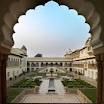
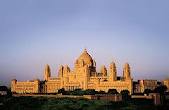
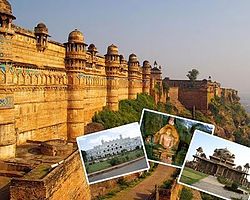
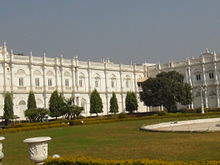
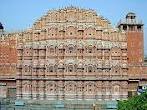
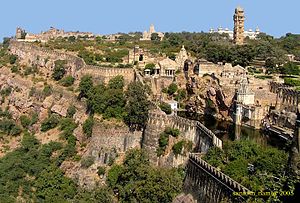
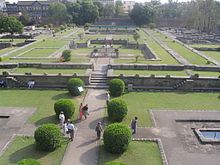
Dear fellow Indians,
We have poor self-esteem. We are ready to accept failure and subjugation as our moral due. And, with the attitude of hyenas rather than lions, we expect to extract spoils out of our shame.
Raiders from north-west are not to be blamed for defeating us, plundering us, subjugating and ruling over us. We ourselves are to be blamed for losing. After all, we were fighting on our own soil and the invading armies were invariably smaller than our own, as the blog itself says. If India loses to Brazil in a soccer match, it is foolish to accuse Brazil of cruelty or criminality. It is necessary to look at and into ourselves to identify our weaknesses, understand their reasons and strive to get over them. This has to be done honestly and truthfully. We should have the courage to face ourselves.
Indians are brave. Indians soldiers have fought remarkably well under British officers…..and after Independence, under the discipline and training inherited from the British. So the question rises: is India suffering because of craven leadership? The attitude of the kings and chieftains during the time of Akbar and the British say YES. Our elite lack that quality which inspires subordinates, lack the skill to organize and manage: in short, our leadership has been deficient in what are known as ‘leadership qualities’. Our leaders had sold us in exchange for privileges. As the blog rightly points out, the cravenness continues today. The trader who does business with a white European or American is respected more than a trader who does even more business with an African or a Chinese. A businessman with “foreign connections” has a higher place among the elite than a businessman whose clients are totally within India. A mediocre professor in a western university is regarded as a veritable fountain of wisdom while a brilliant and more accomplished Indian professor will be relegated to the lower tier, his academic stature tied to how much he quotes of the white man’s pronouncements.
These “Qusilings”, medieval and modern, are celebrated. But the hardy, proud, patriotic fighters who delivered their lives for their dignity, freedom and motherland are consigned to the dustbins of history. We all are being told repeatedly, year after year, about passages and episodes from the “white-collar” “independence struggle” that is supposed to have won India its freedom from British rule. How many of us know about the “Santhal rebellion” where they fought till the last man died, an old man with no weapon other than a bow and a single arrow left? Even as he was shot to death, he shot the last arrow and killed the English soldier who had shot him. How many of us know about Pazhassi Raja and his valiant band of tribals who fought to death? There are many such tales of bravery, such proud passages, that hardly anyone cares about.
Certainly this is not to disparage the great sacrifices and leadership of the great freedom fighters: but IMHO the great “Indian Independence Struggle” would not have happened if the Indian elite were admitted into the British clubs. They would have been happy, and would have happily lorded it over their fellowmen, telling themselves in vainglorious pride, “I and gora saheb….we rule over all these stupid natives”. And that attitude persists in the blood of the Indian elite to this day.
The blog says “…you understand why Indians prefer to surrender than to fight and why they simply give up when the going gets tough. It has been bred into them for the past 1,000 years.
This posture, imbibed over centuries of foreign subjugation,…”…
I beg to differ. This attitude has been bred into us not because of foreign subjugation. On the other hand, we suffered foreign subjugation because of this attitude developed within us somewhere between the time of Emperor Harsha and Mahamed Ghazni. So much so that we are always trying to please the foreigner, we constantly crave to be in his good books, we are ready to compromise our national interests and sell our fellows down the river if it fetches us some vacuous honour from foreign ‘masters’, yet even now.
The blog mentions the decline that happened between Harsha and Ghazni. “Between 700-900 CE, India became softer and turned its focus inward. The thirst of conquest metamorphosed into the thirst for eternal salvation of the soul. The glory of renunciation became the preferred trait. Invasions and conquests were considered passe and immoral. India slowly turned into a soft, nonbelligerent, rich society that was ripe for plucking. And by 1000 CE, the raids began.”
Right. But does anybody know why? I can say, the shortest explanation will be “because of our misunderstanding, or misinterpretation, of the Gita and the Vedas.” I will leave it there and see what you all have to say.
The solution lies in this direction. I have exactly identified it through about five decades of active association – directly and indirectly – with the Hindu faith, deriving from a five hundred year-old heritage of association with a prominent Hindu temple in Kerala. That is a unique blessing I have had the great good luck to enjoy, and I believe Hinduism is the ideology for the peaceful and prosperous future of the world.
If we realize and accept the true message of the great books, India will rise once again to its rightful power and glory, and to its rightful place in the forefront of nations. We can, if we will. The only pre-requisite is that we should be ready to face the truth honestly, and be ready to act on our own volition without having to secure the approval of “foreign experts and advisors”. Though it is always likely to be a bitter rival, China’s pride should be a pointer to us.
But I say we have to go forward to our roots, not go back to them as the blog suggests.
Jai Hind!
Hi,
Its a nice article. Would like to mention a small thing here. Netaji Subhash Chandra Bose was a freedom fighter from Odisha (not Bengal). He was born in a bengali family from Odisha & was brought up in Odisha. He got his education from Odisha (He was from my school in fact) . He got his first lessons on freedom struggle from his school which was a breeding ground for a lot of great minds ,revolutionaries, freedom fighters etc.
I would love to see this correction someday (not only in this article )
Rakesh